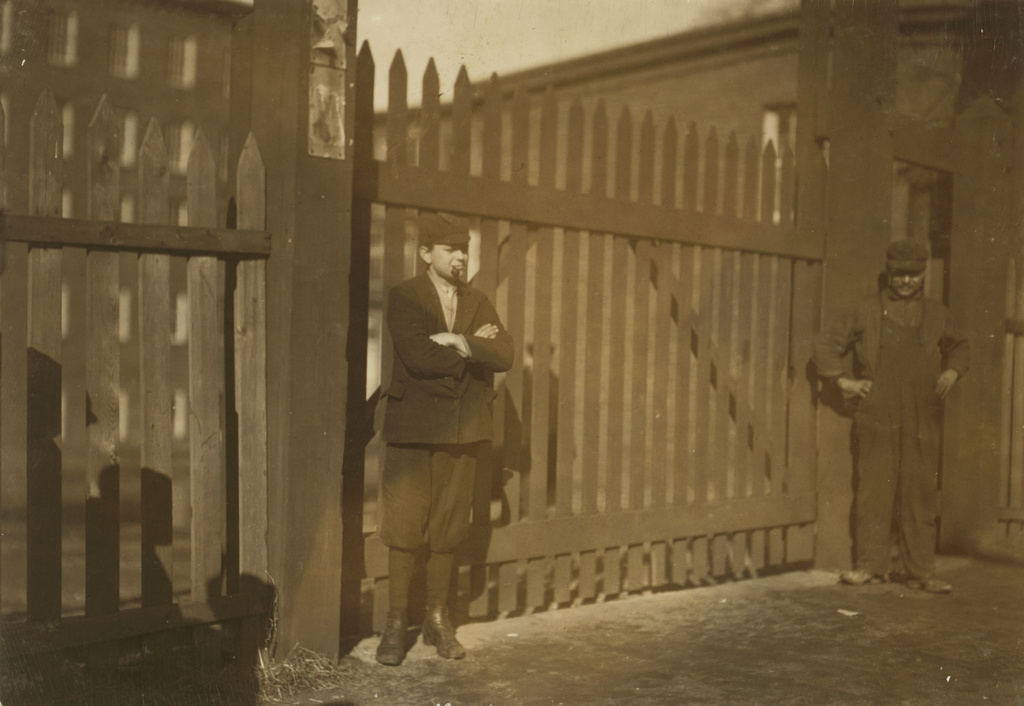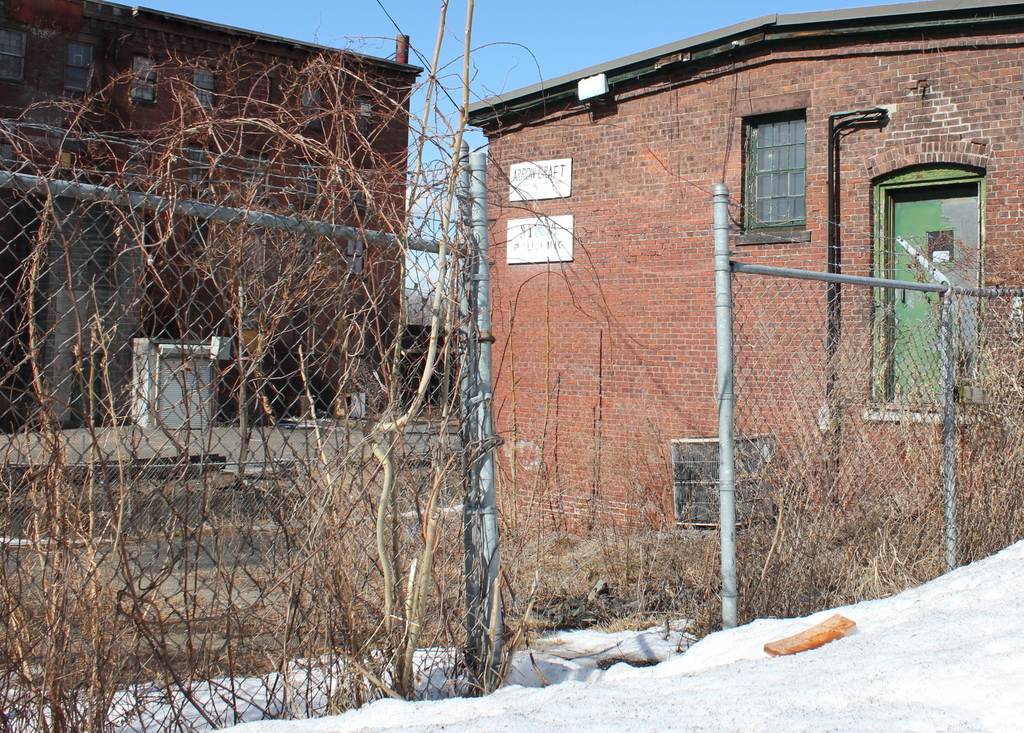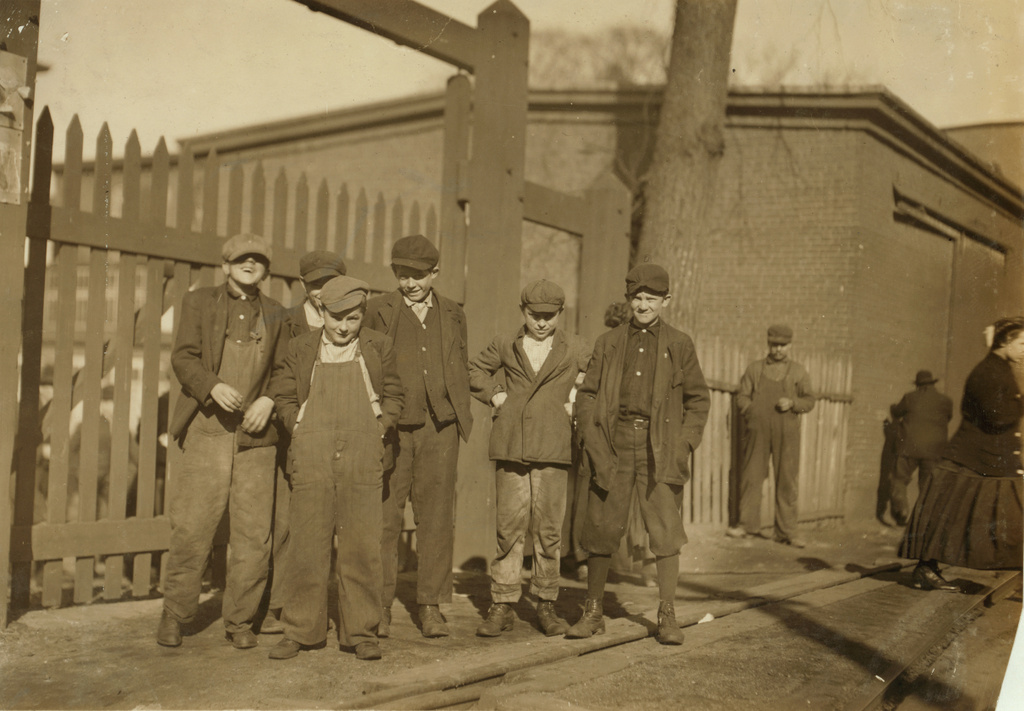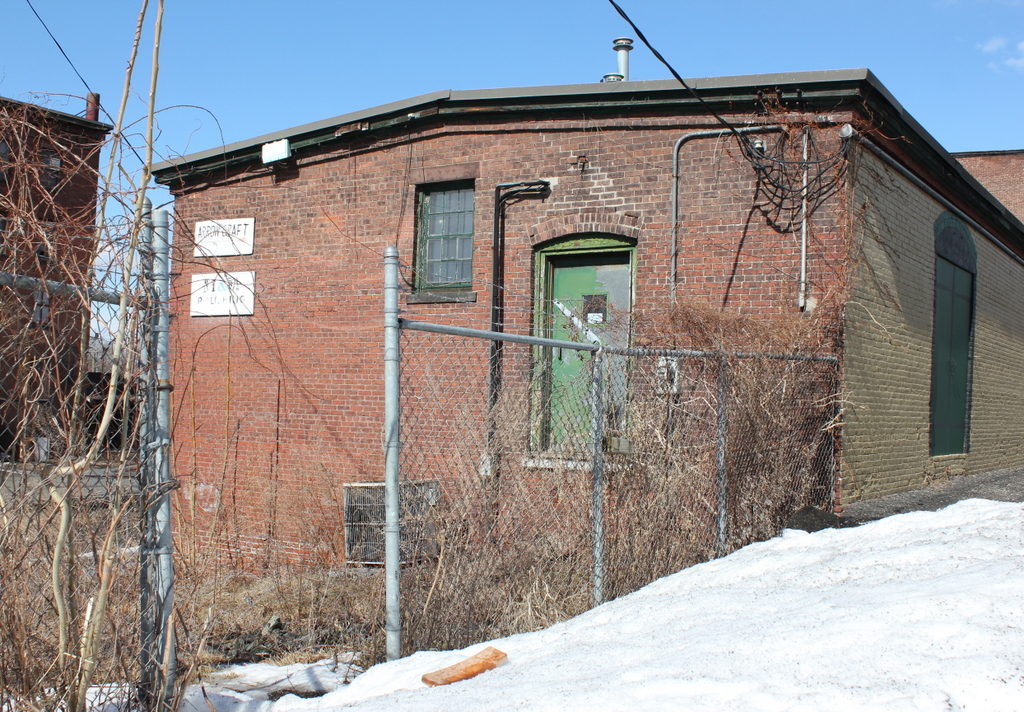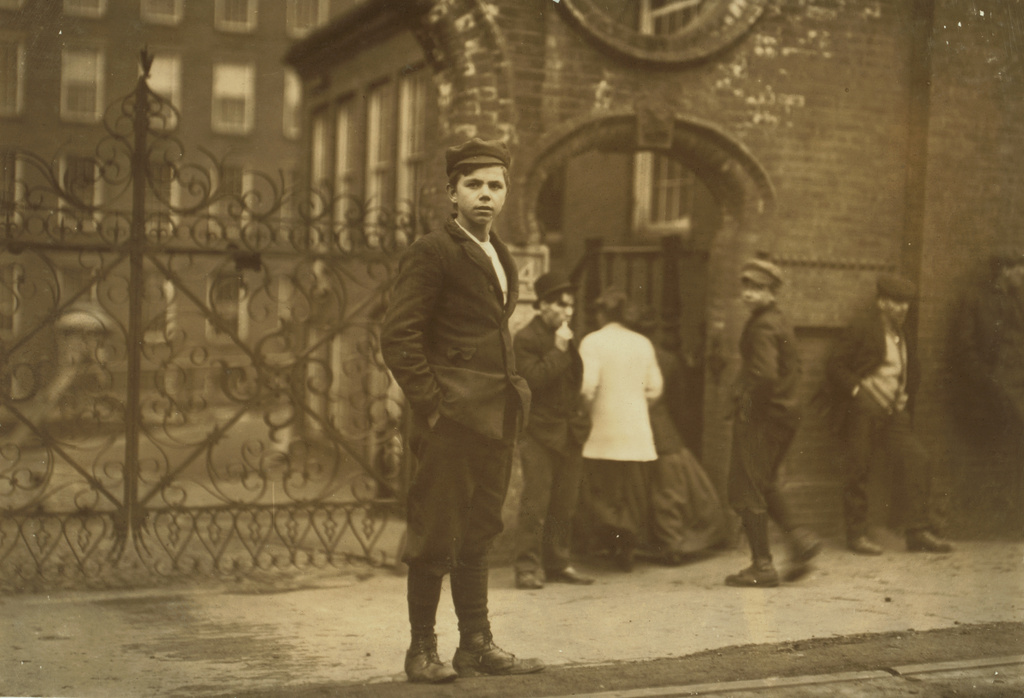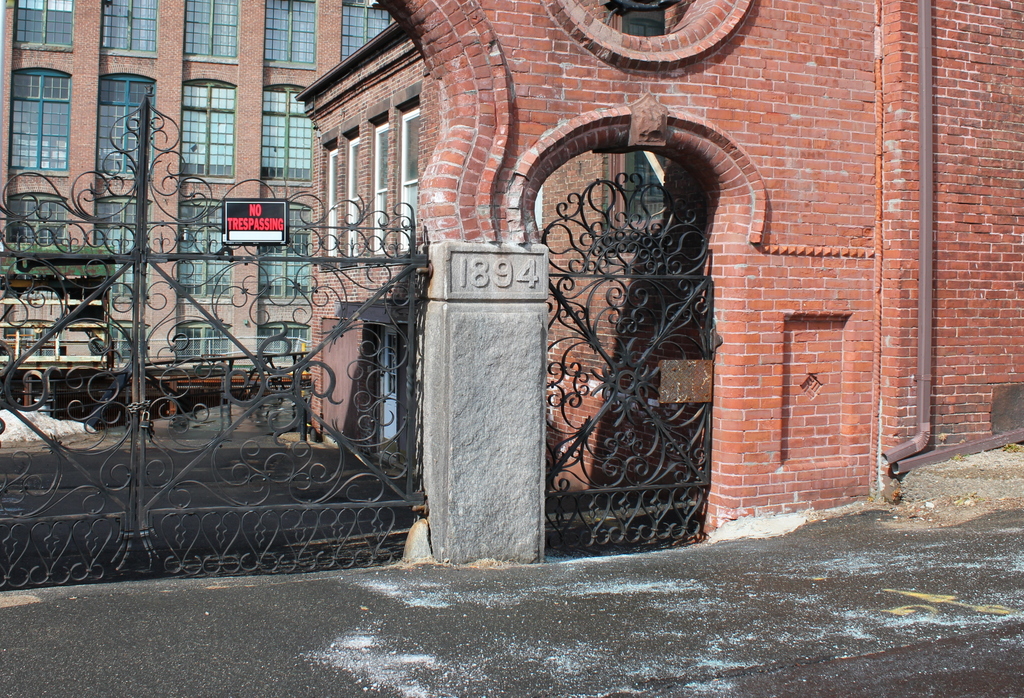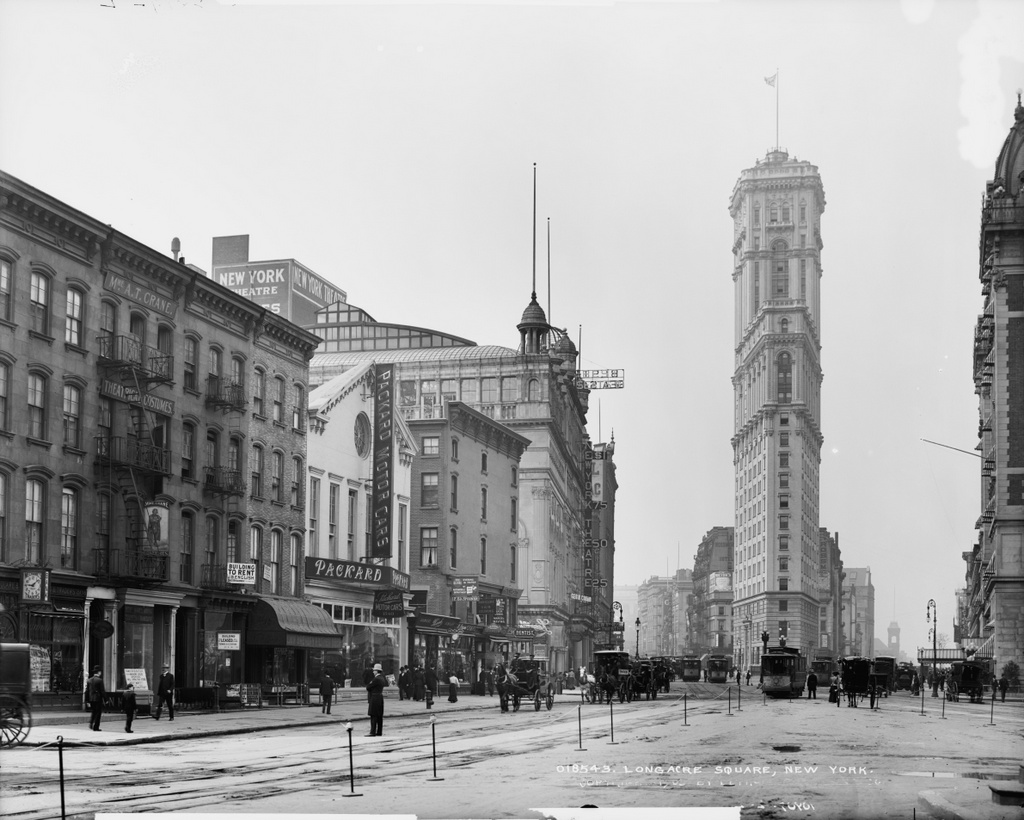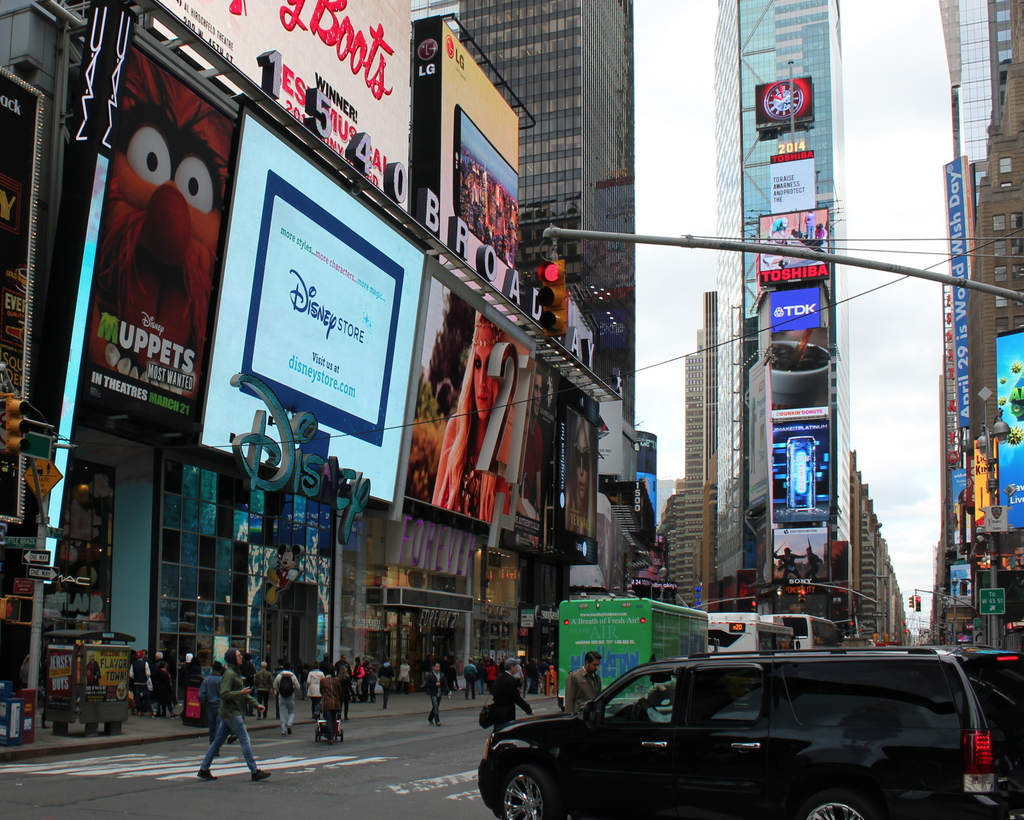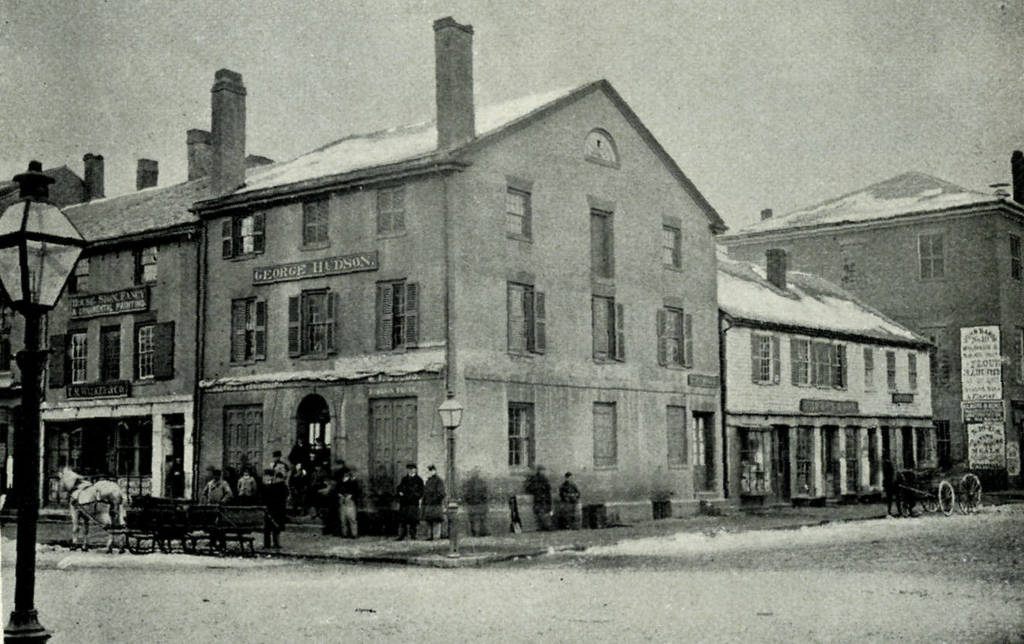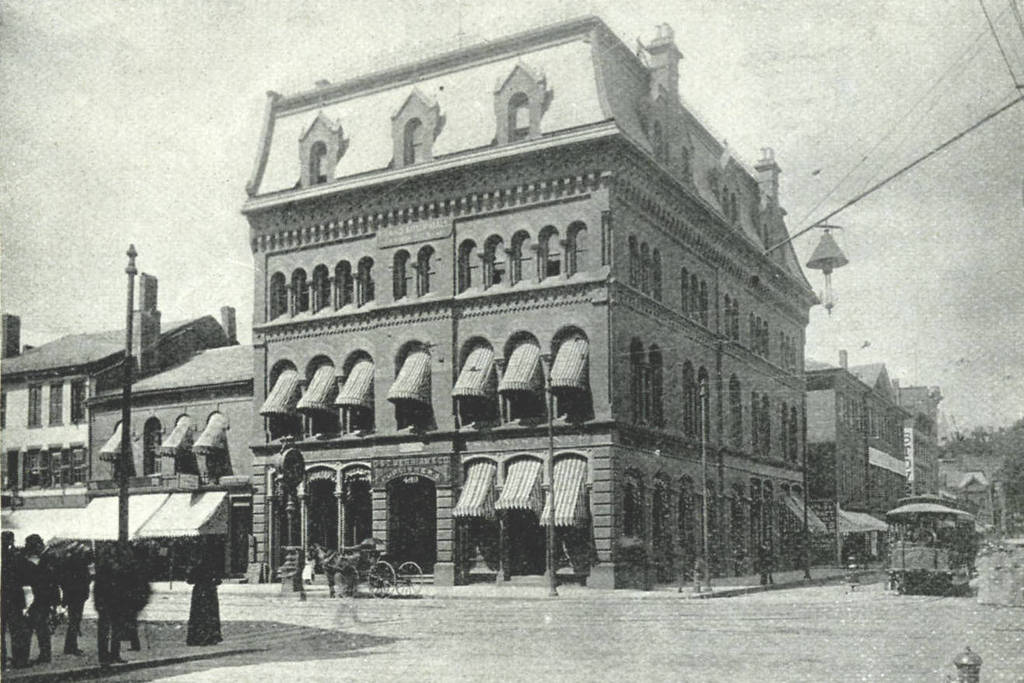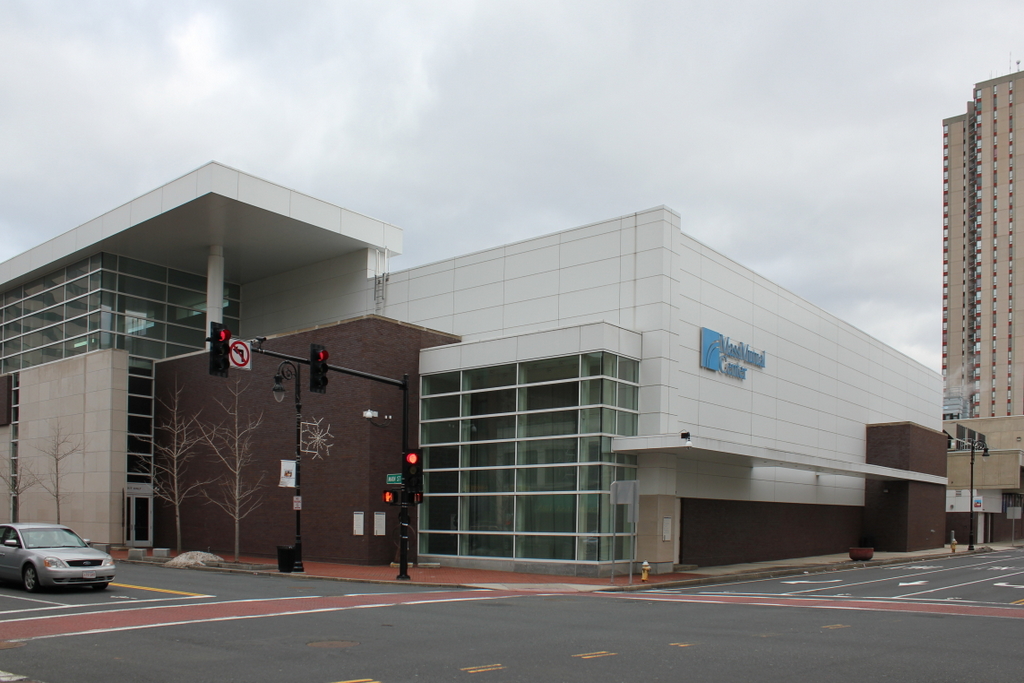Employees of the Dwight Manufacturing Company in Chicopee, Mass, in November 1911. Image courtesy of the Library of Congress, National Child Labor Committee Collection.
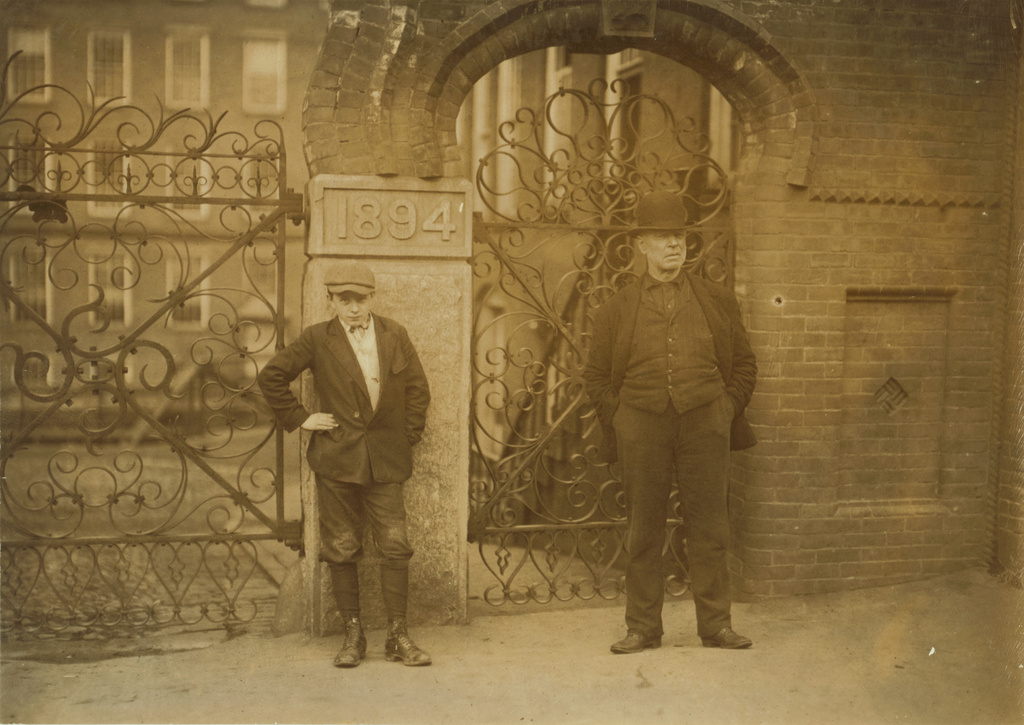
The same scene in 2014:
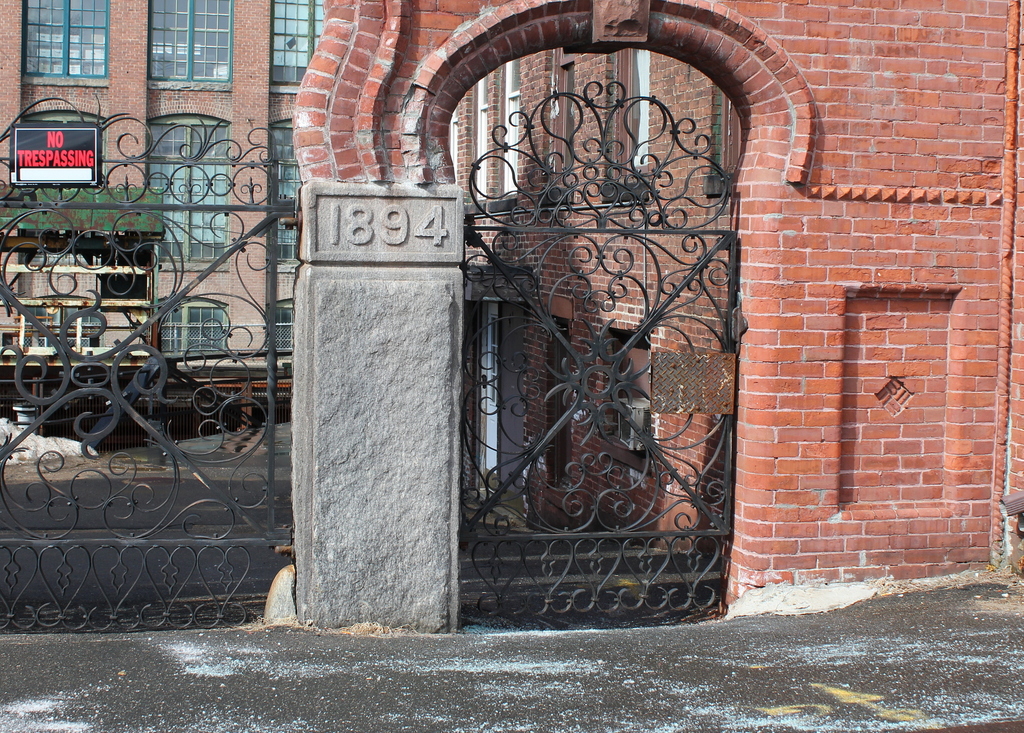
This photo was one of many taken in Chicopee by noted photographer Lewis Hine, during his travels across the United States documenting child labor issues. Photographing for the National Child Labor Committee, his photographs are now available through the Library of Congress, so I decided to try to re-create some of his Chicopee photos.
This one is probably my favorite, because the scene can be re-created so perfectly; the brick walls, the “1894” on the granite pillar, and even the wrought iron gates are still there. At the time that the photographs were taken, the factory belonged to the Dwight Manufacturing Company; it was part of a sprawling complex of factories and boarding houses along the Chicopee River, and many of the buildings still exist today, including the main entrance, which is surprisingly unchanged over 100 years later.
Hine identified the young man on the left as Stanislaus Fabara, writing this as the caption of the photo:
Watchman Stanislaus Fabara, 59 Exchange St. Works in cloth room. The day before he gave me his name as Frank Fabara and today said it was wrong. “We give wrong names when we think trouble is coming.” Two other boys here acknowledge giving me wrong names also. Location: Chicopee, Massachusetts.

